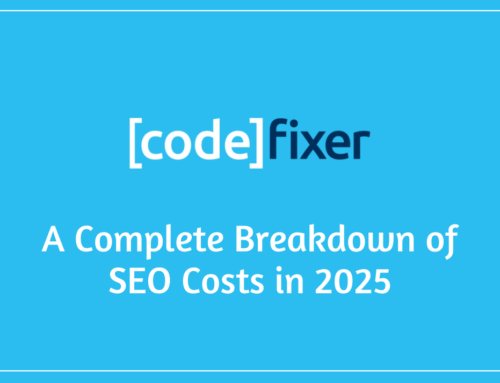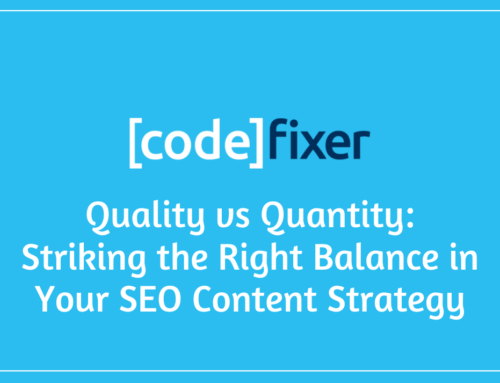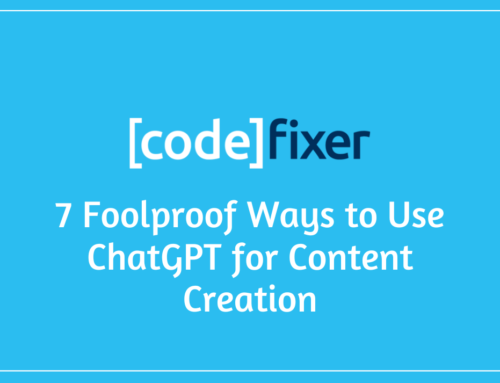Introduction
The key to success on Google Ads in 2021 is having an organised, well structured, and correctly maintained Google Ads account.
Auditing your Google Ads account regularly ensures the account is properly managed and is adapting to the fast-paced environment of paid search, keeping up-to-date with new product features and best practices as they continue to evolve.
This Google Ads audit serves as a check-box exercise ensuring that critical errors are not missed when analysing your account, and serves to remove poor-quality and outdated components of your account, ensuring the account is in keeping with contemporary industry-leading methods and techniques.
This audit consists of various sections pertaining to each level of your account, segmenting these steps into the different levels of your account including; Account level, campaign level, ad groups, ads, keywords, extensions, and conversions.
Whilst some sections of this audit may be more, or less relevant than others depending on your specific objectives, products, and/or services, we endeavour to provide a holistic guide of overall Google Ads account management and provide guidelines relevant to every account irrespective of these distinctive characteristics.
Account Level
Account Settings:
- Ad Suggestions – This should be set to “Don’t Automatically Apply…”, If this is enabled, suggestions from account notifications will be automatically applied 14 days after notification.
- Auto-Tagging – This must be set to “Yes”. This allows Google Ads & Google Analytics to correctly attribute site visits from Google Ads.
- Call Reporting – This must be enabled if Call Extensions or Website Call Tracking is being used so we can analyse the call details report.
- Inventory Type – Inventory types provide an extra layer of control over the content your Video ads show on by letting you opt-out of groups of sensitive content.
- Excluded Content – This allows us to opt-out of showing our ads on the search & display network on sensitive content.
- Excluded Types & Labels – This allows us to opt-out of showing our ads on certain types of content or digital content labels.
Linked Accounts:
- Google Analytics – Google Analytics must be linked to track paid traffic, and to import goals and audiences.
- Google Merchant Center – Google Merchant Center must be linked to advertise items on your shopping feed in Google Shopping campaigns.
- YouTube – YouTube must be linked for monitoring view count, remarketing & viewing engagements.
- Search Console – Google Search Console must be linked to view the paid & organic report.
Billing Settings:
- Payment Users – The payment user should be someone that isn’t likely to leave the company or a shared accounts department email address. This is very difficult to change if it’s not possible to get in contact with the person that was previously listed as the payment user.
- Payment Methods – Ensure the payment method hasn’t expired, or that there is a secondary payment method added.
- Identity Verification – If Google Ads has requested identity verification it is imperative that this is completed within the timescale and accurately to prevent disruption of service. There are a limited number of attempts to complete this, so it’s worth taking the time to ensure this is done correctly.
Shared Library:
- Negative Keyword Lists – Negative keyword lists should be organised by theme and applied to appropriate campaigns. Negative keywords should very rarely be applied at the campaign or ad group level. It’s generally recommended to have the match type set to phrase for negative keywords.
- Placement Exclusion Lists – Placement exclusion lists should be used to prevent display and YouTube ads from showing on poor quality websites, apps, and videos. These can usually be shared between accounts. There are extensive placement exclusion lists available online for free.
Campaign Level
Campaign Settings:
- Campaign Name – The campaign name should accurately describe the purpose and scope of the campaign, including the type of campaign, where it’s targeting, and what it’s advertising.
- Campaign Status – This can be enabled, paused or removed. Check that campaigns that shouldn’t be running are paused, and campaigns that should be running are live.
- Campaign Goal – Campaigns should have a relevant campaign goal dependent on the purpose of the campaign. This can be leads, sales, or website traffic.
- Networks – Generally search network & display network should be disabled.
- Locations – Check that the locations selected are the correct location you intend to target and that no additional locations have been entered by mistake, or left in from the defaults.
- Location Options – Ensure that target setting under location options is set to “People in, or regularly in your targeted locations” to prevent ads from showing to users outside of the targeted locations.
- Campaign Budget – There should be a sufficient dedicated budget for campaigns using automated bidding strategies, and the campaign should not show as “Limited By Budget”.
- Bidding – The bidding option should be appropriate for the bidding strategy. Campaign level bidding is used to set a max CPC, or target return on ad spend on some automated bidding strategies, otherwise, this is handled at the ad group level.
- Dynamic Ad Targets – Campaigns with Dynamic Search Ads or Dynamic Remarketing ads should have a page feed for search ads applied, or a feed and filter applied for Dynamic Remarketing.
- Conversions – The “Use the account-level ‘Include in ‘Conversions’ settings” option should usually be applied.
- Ad Rotation – Ad rotation should be set to “Optimise: Prefer best performing ads” unless when specifically testing new ad variations.
Ad Groups
Ad Group Settings:
- Ad Group Name – The ad group name should accurately describe the purpose and scope of the ad group, briefly describing the keyword theme of the ad group.
- Ad Group Status – This can be enabled, paused or removed. Check that ad groups that shouldn’t be running are paused, and ad groups that should be running are live.
- Bidding – On campaigns with manual bidding strategies the bids are set at the ad group level. Ensure there is an appropriate bid applied in the ad group settings.
- Ad Rotation – This should normally be set to “Use campaign setting”, the default option.
- Targeting Expansion – Targeting expansion should be disabled when targeting audience lists on display campaigns to prevent poor quality impressions and clicks.
Ads
Ads Best Practice:
- Ad Variations – Each search ad group should have a variety of expanded text ads with unique headlines and descriptions. These should be regularly reviewed and updated to test well-performing combinations. Each display ad group should have a variety of dimensions for standard display ads, or assets for responsive display ads.
- Ad Strength – Responsive search ads and responsive display ads should have an ad strength of average, good, or excellent. Ads showing a poor ad strength should be updated to include more high performing keywords in the headlines and descriptions in responsive search ads, or a better variety of assets in responsive display ads.
- Ad Types – Each search ad group should contain, at a minimum, one responsive search ad, and two expanded text ads.
- Ad Status – This can be enabled, paused or removed. Check that ads that shouldn’t be running are paused, and ads that should be running are enabled.
Keywords
Keywords Best Practice:
- Keyword Match Types – Keywords should be a combination of phrase and exact match in most circumstances. A high number of broad match keywords suggests a poor quality ad group.
- Search Term Accuracy – Assess the search terms report and identify the quality of these compared to the keywords that they have matched with. Poor quality search terms should be identified and used to populate the negative keyword lists.
- Keyword Quality Score – Check that keyword quality score is good. If the quality score of the keywords is very low it could suggest that the keywords are not relevant to the ads, the landing page quality is poor, or the expected clickthrough rate is low. Consider pausing low quality score keywords.
- Conflicting Negative Keywords – Look for conflicting negative keywords, this can be found in the recommendations tab, or you can use a script to scan your account for negative keyword conflicts.
- Keyword Relevancy to Ad Group – Make sure that the keywords in each ad group all match a similar theme and are not applied indiscriminately. If there are a large number of keywords with poor relevancy you may want to consider segmenting these to create new ad groups.
Ad Extensions
Ad Extensions Best Practice:
- Call Extensions – If one of the goals of the Google Ads account is to generate calls make sure a call extension has been added at the account or campaign level and that there is a conversion action applied.
- Location Extensions – If users can visit the business location, location extensions should be applied to the account. This will allow us to measure Google hosted conversions such as store visits, calls, direction requests, site visits, and messages.
- Structured Snippet Extensions – Structured snippets should be used to highlight products or services offered.
- Image Extensions – Image extensions should be used to display extra information to users on the search engine results page.
- Dynamic Image Extensions – Dynamic image extensions can be used in place of, or complementary to standard image extensions. These should be monitored to ensure no inappropriate images are showing.
- Sitelink Extensions – Sitelinks should be applied to the account, campaigns, or ad groups and should contain sitelink text and two high-quality descriptions.
- Callout Extensions – Callout extensions should be used to highlight information about the business, products or services.
- Price Extensions – Where price extensions are used they should be up-to-date and relevant to the ads they are showing on.
- Automated Extensions – Automated extensions should usually be disabled with the exception of the seller rating extension where appropriate.
Conversions
Conversion Actions:
- Calls From Ads – This conversion action is triggered when users call from the call extension on the ad. Ensure an appropriate click-through conversion window has been selected and that the call length is set to a minimum of 20/30 seconds to ensure users who connect and drop off in the first few seconds aren’t counted as a conversion.
- Conversions Imported from Google Analytics – Goals in Google Analytics that are of high value should be imported to Google Ads. These may include contact form tracking, lead form submissions, or similar.
- Website Call Tracking – Website call tracking can be implemented with Google Tag Manager allowing us to track information in the call details report from users who call the telephone number on the website.
- Google Hosted Conversion Actions – If location extensions are added to the account Google hosted conversion actions will be automatically applied to the account.
Conversion Settings:
- Attribution Models – Consider which attribution model is most appropriate for the conversion actions. This will generally depend on the length and complexity of the conversion paths. The attribution generally shouldn’t be left on the default of last-click, however, this doesn’t affect conversions, only how these are attributed to each interaction the user has. If data-driven attribution is available it’s suggested that this is used.
- Call Conversion Action – Ensure a call conversion action has been applied so that details of calls received from the Google Ads account aren’t missed on the conversion reporting.
- View-Through Conversions – View-through conversions are useful in identifying ad impressions that haven’t resulted in a click, but have still led to the user converting on the site. This should be enabled.
If you would like to discuss improving your Google Ads account don’t hesitate to contact us!





